










For ideas on putting your money to work and building wealth in 2023 see our Wealth Builders feature pages 7-10
By DAVID PORTER
The Labour Government’s recently announced budget contained few real surprises.
In itself, that was hardly unusual – we are heading towards an ever-tightening national election campaign later this year, so perhaps understandably the government’s main aim was to exude calm. Or as Craigs Investment Partners’ economist Mark Lister said during a post-budget event analysis held in cooperation
with the Tauranga Business Chamber, to put it cynically, members of the government would like to keep their jobs.
“It was pitched as ‘no frills’,” said Lister. “But it was quite stimulating. There was less money to spend and more debt will be issued.”
KPMG tax partner Rob Hill, who co-hosted the Craigs’ analysis, added Labour seemed to be retaining their post-election tax policies.
Of course strictly speaking, not all members of the Labour government are guaranteed to keep their jobs. Labour has already seen two
defections from their allied ranks, which is hardly an inspiring look for a government going into an election.
Put your money to work
The coming period was likely, Lister suggested, to be a good time to put your money to work.
“You don’t want to buy when everything is at an all-time high.”
Chartered Accountants New Zealand country head Peter Vial, in his summary, indicated that
in his interpretation the Treasury was no longer forecasting a recession, but added that a return to a surplus had been deferred by one year to 2025-26. “We were promised a ‘no frills, bread and butter’ Budget and that is what we have got,” he says.
Dropping the $5.00 prescription charge was a no-brainer but let us not forget that several major pharmacy brands have already knocked off the charge in the interest of business-building; basically the charge is a small tax and
Continued on page 3












See what our smart business solutions bring to the table


From page 1
removing it cannot be said to be making a huge contribution to improving the generally poor view held by many New Zealanders about their access to medical facilities or health care affordability.
Having ruled out tax cuts on affordability and ‘inflation risk’ grounds, the government has focused on targeted support for families, students and young workers and others most affected by cost-of-living pressures, says Vial.
Outguessing the opposition
The lack of any major tax changes partly reflects an attempt to outguess National Party predictions, of course.
However, the extension of Early Childhood Education subsidies will be welcomed, noted Lister.
Free public transport for children under 13 and permanent half price fares for the under 25s reflects a more targeted approach.
Generally, the budget was much more stimulating than expected, said
Lister. But inflation remains stubbornly high and mortgage rates are going up.
Pre-budget, and before the Reserve Bank of New Zealand’s latest Official Cash Rate (OCR) recent revision, economists had increasingly expected the RBNZ would indicate a peak of perhaps six percent.
Instead, the central bank has issued forecasts for the future level of the OCR that are quite similar to those issued in its previous statements in February. It sees the OCR staying
at 5.5 percent till the second half of next year before slowly declining.
Dealing with damage
Of key concern to whoever wins power this year is how to effectively respond to this year’s cyclone damage, reportedly the second-largest natural disaster New Zealand has experienced.
The budget announced a further $859 million of operational expenditure allocated to cyclone and flood
recovery, on top of the $889 million already provided.
Importantly, the need to invest in immediate recovery measures has not come at the expense of significant allocations for medium- and longer-term capital infrastructure expenditure ($71 billion over the next five years). To put it bluntly, we haven’t invested enough in this area. Infrastructure will remain a major preoccupation for whoever holds the government benches by the end of the year.
TBy DAVID PORTER
auranga Chamber of Com-
merce chief executive offi-
cer Matt Cowley has been appointed the new chair of the Local Government Forum.
The Forum is a group of major business organisations that aims to promote efficient and effective local government. Cowley, a former Tauranga councillor, is also a director of the New Zealand Chambers of Commerce and Industry.
“I’ve spent a lot of my working career interacting with local government,” Cowley told the Bay of Plenty Business News.
“I’ve been an elected member, an employee, a customer, and a commentator.”
Cowley replaces Auckland’s Michael Barnett who stepped down from the role in March. Barnett recently retired as head of the Auckland Chamber of Commerce and was replaced by former Tauranga MP Simon Bridges.
“As Forum Chair for the past 12 years, Michael Barnett was a very credible and highly respected spokesperson on local government issues from a business and wider community perspective,” said Cowley.
Cowley noted that the members of the Local Government Business Forum were significant representatives of ratepayers – businesses and farmers.
“Local government is a vital part of the economic and social land-
scape and I see the Forum’s role as promoting policies that will maximise the sector’s contribution to New Zealanders’ wellbeing,” said Cowley.
“The best way for local government to contribute to maximising wellbeing is for it to do its core activities well and keep its spending and rates under control.”
According to a statement issued on behalf of the forum, it is comprised of organisations that have a vital interest in the activities of local government. Its members include Business New Zealand, the Electricity Networks Aotearoa, Federated Farmers of New Zealand, Hospitality New Zealand, New Zealand Chambers of Commerce and the New Zealand Initiative. The Forum








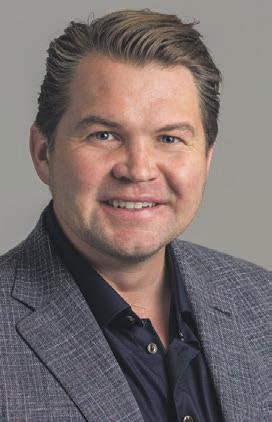
was established in 1994.
Cowley told the BOP Business News the forum was made up of several nationwide business associations and that Chambers of Commerce have a wide variety of members covering all industries, which was why Michael Barnett was a logical choice of forum Chair for over a decade.
“The forum believes in the power of unity across industries,” he said.

“It identifies public policy matters that impact a range of industries to send a united business perspective to all political leaders. The forum champions the voice of rural and urban industries, recognising the importance of regional communities alongside New Zealand’s largest urban centres.”








CONTACT INFORMATION
PUBLISHER
Alan Neben, Ph: 021 733 536
Email: alan@bopbusinessnews.co.nz
EDITORIAL
Alan Neben, Ph: 021 733 536
Email: editor@bopbusinessnews.co.nz
PRODUCTION – Copy/Proofs/Graphic Design
Times Media – Clare McGillivray
Email: clare@times.co.nz
ADVERTISING
Pete Wales, Mob: 022 495 9248
Email: pete@bopbusinessnews.co.nz
ELECTRONIC FORWARDING
EDITORIAL: News releases/Photos/Letters: editor@bopbusinessnews.co.nz
GENERAL INQUIRIES: info@bopbusinessnews.co.nz
Bay of Plenty Business News has a circulation of 8000, distributed throughout Bay of Plenty between Waihi and Opotiki including Rotorua and Taupo, and to a subscription base. www.bopbusinessnews.co.nz
Bay of Plenty Business Publications
309/424 Maunganui Rd, Mt Maunganui, 3116
Bay of Plenty Business Publications specialises in business publishing, advertising, design, print and electronic media services.
Iobserved a large portion of the British royal mania that preoccupied most media earlier this year. I have seldom been exposed to quite as much vapid repetition over so many days.
I expected that the British Broadcasting Corporation (BBC) – whose work I generally respect – would be obliged to devote a large amount of coverage first to Queen Elizabeth’s funeral, and then King Charles’ official assumption of the head job.
Charles, of course, automatically became King on the Queen’s death, so the procession of his golden coach and many of the Anglican pieties surrounding his coronation, were rather redundant to the global audience other than for tourist/informational purposes. Apparently, the funeral cost the country around £162 million and the coronation between £50-100 million. By way of a return, tourism monarchy returns are estimated by Brand Finance, in a “normal” year at around £2.5 billion. So we can assume returns were higher during these special events.
the United kingdom long ago, the US still can’t resist a bit of pomp and ceremony.
To be clear, I have nothing against Charles. Indeed as a young reporter, I even spent a fortnight trailing around New Zealand reporting on him and the late Diana after they visited Australia. He was an interesting speaker and personally affable, and his then wife was publicly charming, and was just finding and relishing her media role on her first overseas tour.
The royal press rat pack that travelled with him from the UK was a revelation to a junior journalist, extremely experienced and very funny.
Sadly, since assuming the throne, Charles appears likely to be obliged to talk far less about those issues around climate change he presciently made his own. More to the point perhaps, latest polling suggests he is not exactly the most popular person to assume the throne, especially amongst the younger generations.
£500 million a year, the monarchy’s brand contributes £2.5 billion to British economy in the same timeframe.
More distastefully – but increasingly coming into prominence – is the Royal Family’s wealth, and more significantly, its source, a good portion of which was reaped from exploiting its empire. Charles denounced the “atrocity of slavery” during a recent speech in Barbados when the island held a ceremony to swear in their first president after removing the Queen as head of state.
The Queen was head of state for as many as 32 countries during her reign; by the time of her death just 14, other than the UK, remained. Charles’ accession provides an opportunity for many of his Commonwealth subjects to wonder if the time is right to install a less-remote head of state.
Taking into account that the exact sources of royal wealth tend to be kept quiet and the figures are not easy to track, according to an Investopedia estimate:

In case you missed last month’s edition Scan to subscribe

What I wasn’t quite prepared for was the remarkable amount of air and print time devoted by other media around the world to these events, especially in the US. The funeral perhaps – but Charles’ coronation? It would seem that, despite parting from
However, there remain one or two issues that just won’t go away. Yes, the monarchy is a great tourist attraction for the UK, as well as the late Queen having provided a figure of stability and British reassurance for many decades.
According to Brand Finance, while the average annual cost for UK taxpayers in royal upkeep comes to around
• Queen Elizabeth II had a separate personal fortune of £380.7 million, inherited by Charles. According to Forbes this inheritance has made his net worth over £1.8 billion.
• Additionally, The Crown Estate, which manages the monarchy’s property hold-
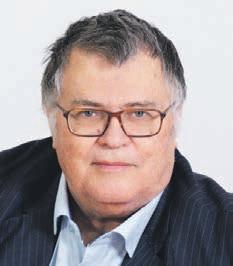

ings, is valued at about £15.6 billion and generated an estimated £312.7 million in net revenue at the end of the 2022 fiscal year. It is understood many of the receipts for this go to the government and are returned in the form of royal salaries.
• The royal family’s overall wealth is estimated at £21.3 billion, according to Forbes That is separate from Queen Elizabeth’s personal fortune and assets. (Let’s not forget those jewels, the royal collection, etc).
Again, to stress, I’ve got nothing against Charles or his current wife. I lived in London for several years and greatly enjoyed it. I admire Charles’ efforts to slim down the royal presence on the balcony, and to despatch brother Andrew to the sidelines. But doesn’t it all feel a bit redundant now for the UK and its former colonies?

The slide in crop volumes experienced in this season’s kiwifruit harvest comes as a key emerging market is enjoying double digit growth and fears it will be left short should there not be enough fruit to go around this season.
By RICHARD RENNIE
Zespri has reported a 20% slide in kiwifruit volumes for this season’s harvest, representing a loss of 35 million trays on last year’s harvest, in itself a lower yielding season.
The 136 million tray estimate marks an exceptionally low volume for the kiwifruit marketer, one not seen for at least six years and one well short of the industry’s record setting 2021 season when 182 million trays were harvested.
Zespri CEO Dan Mathieson attributed the decline to an atrocious run of weather that kicked off with less-than-ideal conditions in winter.
A vicious late frost in early October slammed may BoP orchards, floods from Cyclone Hale washed through Coromandel-Bay of Plenty in late January, then Cyclone Gabrielle laid waste to crops in Te Tairāwhiti and Hawke’s Bay in February.
Even as late as April, growers were also having to grapple with the aftermath of isolated hailstorms in the Te Puke district.
While crop volumes are well down as a result, market feedback to Zespri executives is that consumer demand for the fruit is strong, and likely to outrun the stock available this season. The volume impact on a variety basis is significant.
Green kiwifruit will be at their lowest volume for 20
years at only 42 million trays, well down on last year’s 61 million trays.
A recent visit by Bay of Plenty Business News to Seoul South Korea confirmed the level of consumer interest in SunGold kiwifruit, in a market that has experienced double digit growth for the past seven years, peaking at 20% in 2021 at the height of Covid.
South Korea accounted for 12 million trays last year and generated quarter of a billion in income with SunGold kiwifruit proving increasingly popular in the densely populated country. Kiwifruit are only ranked ninth in fruit popularity there and consumers on average only purchase kiwifruit 2.1 times in a year.
South Koreans are major fruit consumers in a country that grows 80% of its own produce, and Zespri’s regional market manager Bokeun Kang is confident there is plenty of potential to push sales even to existing customers much further.
“Purchasing penetration is only about 30% , compared to bananas at 90%, and we can see significant potential in encouraging existing consumers to simply buy more frequently during the year,” Kang said.
Historically the Korean market has been almost a closed shop for New Zealand produce, thanks to a 40% tariff that has been progressively wound back since the signing


of a Free Trade Agreement in 2015.
When it was in full force the tariff was regarded as one of the steepest in the world and was estimated to have cost growers about $8000 a year in lost income.
Korea also grows its own kiwifruit, largely on Jeju Island off the South Korea coast.
This includes fruit grown on contract for Zespri, with 200ha of crop generating about 500,000 trays last year and expected to reach almost 800,000 this season.
This fruit integrates with Zespri’s global supply plan, with northern hemisphere fruit grown there, Japan, Italy, France, and Greece all contributing to off-season supply.
Kang acknowledged the challenge of maintaining shelf space for the entire season this year, given the constraints on supply out of New Zealand due to the crop shortage.

This will require him to knock USA fruit giant Dole off its no.1 spot, requiring sales of over NZ$370 million a year to do so. He is confident Zespri will hit $300 million in sales by 2025.
Korea offers a fascinating insight to multiple marketing
platforms that are slogging it out via the internet and traditional bricks and mortar formats, with indications e-commerce is gradually winning more ground.
Zespri’s sales comprise 40% through retail, 50% through wholesale and 10% on e-comm platforms. These have doubled in share since Covid and continue to grow.
Korea is shrinking in popu-
lation size, losing 128,000 last year, but Kang still sees significant opportunity in increasing demand from young families. This has been aided by the “Kiwi Brothers”, animated kiwifruit holding strong appeal with young children, there and in Japan.
– Richard Rennie’s trip was funded through the Asia-New Zealand Foundation.

If you’re contemplating a change of career, why not consider owning your own franchise business?
With direct access to over 30 well-known franchise brands in locations all around the country, it’s quite likely we have the business opportunity that perfectly ts your lifestyle.
Iridium Partners help potential franchisees research, evaluate and navigate the franchise industry to nd the perfect opportunity for you. Contact us today and get some balance back in your life.
Call Meredith on +64 21 209 9496 info@iridium.net.nz www.iridium.net.nz
Frustration at traffic delays within Tauranga have spilled over into Waikato region as lines of traffic grow ever longer at the vital Pairere SH29-SH1 intersection, with little indication things will improve in the short term.
By RICHARD RENNIE
rett Marsh owns Brett
BMarsh Transport with wife Leonie and says transport operators in WaikatoBay of Plenty have grown increasingly frustrated in the past year over the growing delays now experienced at the Pairere-SH1 intersection.
“It has definitely got worse since the expressway was completed through the Waikato.
“More drivers are opting to go via Cambridge to Auckland, rather than through Katikati.”
He welcomed Waka Kotahi’s plans for a roundabout at the intersection, but knew it would be some time before that is completed.
“You even have people opting to go through Morrinsville now, rather than deal with the intersection, and it is only 10 minute’s slower that way, at least you are moving.”
He said it was one of several pinch points for traffic that Bay of Plenty-Waikato seemed peppered with.
It is causing chaos. We cannot make the times booked at the port now, and you will be charged a late fee by Port of Tauranga, on top of your booking fee. Meantime we are being told by NZTA to wind our drivers’ hours driving per day down, yet trucks are sitting longer in traffi c. The entire region is slowly grinding to a halt.” – Brett Marsh
Transport operator Brett Marsh said theWaikato-BoP region is starting to grind to a halt with traffic impacting on operator productivity and timely port access.
His drivers could also expect to take an hour at times to travel the mere 11km from Te Puna to Tauriko, such were the delays on that corridor now. “And there is the eastern corridor which is still not completed.”
Marsh said cumulatively the delays are causing major productivity problems for companies like his, and for the
Others included coming east into Tauranga, with traffic jams snarling up into Tauriko that often extended as far back as Ruahihi at the foot of the Kaimai ranges.
region as a whole given its role serving the country’s largest port.
“It is causing chaos. We cannot make the times booked at the port now, and you will be charged a late fee by Port of Tauranga, on top of your booking fee.
“Meantime we are being told by NZTA to wind our drivers’ hours driving per day down, yet trucks are sitting longer in traffic. The entire region is slowly grinding to a halt.”
A Waka Kotahi spokesper-

Proudly providing expert advice and adding value to projects across the Bay of Plenty since 1940.
To experience Cheal’s award winning service,

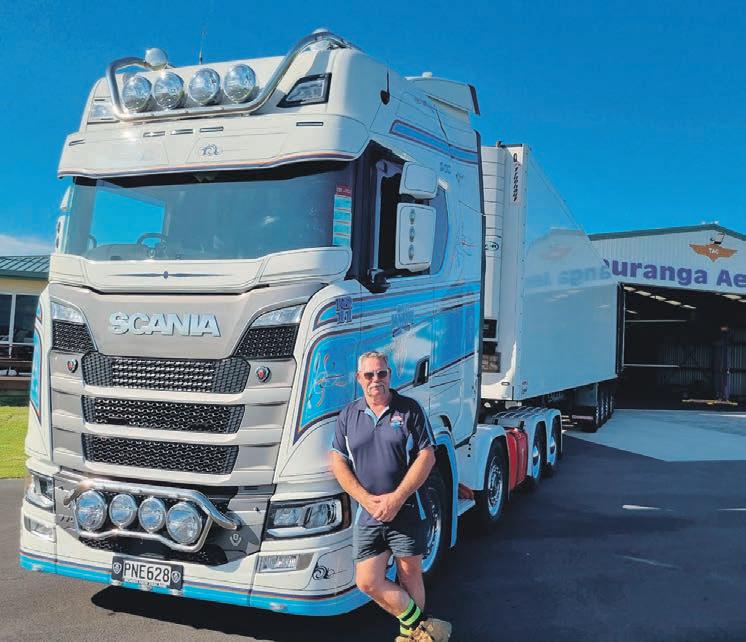
son confirmed the new roundabout at the intersection was scheduled for commencement this October, with a two-year completion time.
It was designed to allow connection with a potential future expressway between Cambridge and Piarere.
The original Waikato Expressway plan had was intended to extend to the intersection but was shelved by Labour in 2018, and no time has been set for this to re-commence.
The current intersection will continue to be used as the roundabout is being built on the Hamilton side of the current intersection, with complete new approaches from all routes feeding into it.
Waka Kotahi traffic data
shows the greatest increase in traffic volume has come from a 11% growth between 2021 and 2022 in traffic travelling north up SH1 past the intersection. Traffic travelling east on SH29 towards Tauranga has increased 6%, while westbound traffic on SH29 actually recorded a decline of 1%.
Average daily traffic counts through the entire intersection are up 5.7% in the same period.
One fatal accident has been recorded in the past eight years to late May this year killing two people, while three serious injury accidents have occurred over the same time, seriously injuring seven people.
Transport organisation Ia Ara Aotearoa acting CEO Dom Kalasih said the intersection
was one of several members had raised as being of concern.
“The expressway (completion) has definitely increased the traffic going through that intersection. I understand a roundabout has been in the plan for quite a while, it is good to know it is coming.”
Last year Tauranga City commissioner Stephen Sellwood said Waka Kotahi’s failure to deliver on transport infrastructure was causing serious frustration for the commission as it attempted to develop more land.
Tauriko West, identified for 4000 homes, was dependent upon uncertain long-term transport plans, he said. Transport options were also based on decade-old traffic density figures.








In an era of economic volatility and market uncertainty, finding investment opportunities that provide consistent returns can be hard to come by. However, local company First Mortgage Trust (FMT) has managed to achieve this for over 27 years.
With their conservative investment strategy and stringent lending requirements, FMT has not only weathered the storms but has also managed to consecutively increase its investment return rate over the past five quarters and is anticipating further increases, which is good news for their investors.
CEO Paul Bendall says, “We strive to provide peace of mind investing. We want our investors to feel reassured their money is in steady hands. FMT has a great track record of providing consistent returns and in our 27 years of business no FMT investor has ever lost a cent of capital, even during the GFC and, more recently, the Covid-19 pandemic.”
This exceptional accomplishment is a testament to FMT’s disciplined approach, their risk management strategy, the expertise of their team, their local property market knowledge and their unwavering commitment to the preservation of investor capital.
Protecting our investors’ wealth is our number one focus.” –Paul Bendall, CEO
FMT has demonstrated an impressive track record of delivering consistent returns, even in market uncertainty. This achievement can be attributed to their prudent and diversified investment strategy.
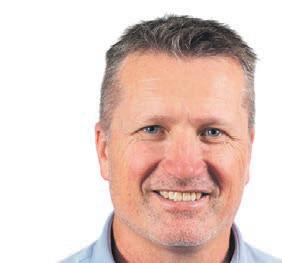



“We know these are uncertain times and people are cautious, especially when it comes to investing and deciding what to do with their nest egg and savings. Living costs and inflation are high and this can be hard for savers. We understand this and that’s why we are pleased to have been able to deliver increased investment returns for the last five quarters, and because of our consistent investment returns and the peace of mind we provide we’ve seen many of our investors invest more with us and recommend us to their friends and family,” says Paul.
FMT has showcased its expertise in wealth protection and generation by progressively increasing its investment return rate. Their March 2023 quarterly rate was a pre-tax return rate of 6.61% (annualised) which was well received by investors.
FMT’s head office is based in First Avenue
in the CBD; they opened their doors in 1996 and now have offices in Auckland, Christchurch and Wellington. They are a non-bank lender and an active fund manager of the First Mortgage Trust Group Investment Fund and First Mortgage PIE Trust. This combination has enabled them to react quickly to market conditions that identify any areas of risk and areas of opportunity.
How FMT works
Investors invest in either Fund, then FMT lends the money out to Kiwis seeking property finance. FMT differs from some other investments as both funds are trusts. The trust structure means each fund is supervised by an independent supervisor. The supervisor plays an integral role in the governance of FMT and they have oversight of lending decisions. “This gives our investors confidence that their money is being managed well,“ says Paul.
The FMT lending and credit team have a thorough due diligence process for every loan application. If approved the lending team
The money our clients invest with us helps New Zealanders achieve their property related goals. It builds homes, businesses and it helps shape communities. In return we are able to provide a stable return to our investors to help them achieve their investment goals.”





works with the borrowing clients to deliver a personalised, tailored solution which in turn delivers better outcomes for both borrowers and investors.
Helping locals
FMT’s loans are spread across the whole country and are diverse to ensure the loan book is of high quality. One of the local projects FMT recently financed was the Vantage mixed-use development on Cameron Road which created 27 apartments and commercial leases and is a welcome addition to Tauranga city.
FMT has been involved in many local projects ranging from small to large and across residential, retail, commercial, rural and industrial sectors, contributing to Tauranga’s prosperity.”
For many years, FMT has been involved with the Tauriko Business Estate, a significant commercial and industrial project that has already seen many businesses move into the business hub, attracting companies from around the country and Australia.
Today FMT has over 6,000 investors and numbers are steadily growing largely through referrals and recommendations.
If you are looking for an investment with consistent returns or property finance with a local team that understands the market, call on 0800 321 113 or visit fmt.co.nz

For property investors interested in optimising their investments, the current economic environment is dishing up both challenges and opportunities in equal order. The specialist Property Brokers team has a wealth of knowledge and advice which can be incredibly helpful for property investors right now.
We spoke to Property Brokers’ Bay of Plenty and South Waikato regional manager Simon Short for the December 2022 Thought Leaders feature. At that time, we asked Simon, “Where is the real estate industry headed in 2023?”
His response at the time was very direct: “With interest rates now elevating, as expected, to offset inflation, I sense, like many, next year will be a year of further pricing correction and calibration.”
He felt interest rates would have the largest bearing on buyer confidence, stating, “Affordability is now a significant factor with capital gains no longer as prevalent.”
Fast-forward six months to June 2023, and his read of the anticipated 2023 market was obviously pretty well ‘spot on’.
Property Brokers’ story
Property Brokers has grown rapidly from humble provincial beginnings to now be New Zealand’s largest, fastest-growing provincial real estate brand.
As one of Heartland New Zealand’s largest real estate businesses, they list and sell an enormous amount of provincial property, whether residential, rural, lifestyle, commercial or industrial.
Bay of Plenty Trends 2023
Property Brokers now has offices across the Bay of Plenty in Whakatane, Rotorua, Te Puke, Papamoa, Tauranga, Tauriko, and Te Puna.
The company has established seven offices across the Bay of Plenty region in the last three-and-a-half years.
“We have great people who care about add-
ing as much value as possible for our clients. Our number one objective is to give all Bay of Plenty property owners the very best service we have to offer.”
Simon believes there is a real awareness of Property Brokers across the Bay of Plenty now.
“We envisage that will continue as more people come to appreciate the strength we offer right across the nation. We are not franchised; therefore, our emphasis is always on connection and adding as much value as we can to benefit those around us.
We asked Property Brokers’ Bay of Plenty and Northland rural manager Ian Morgan about the outlook for rural investors.
He feels Property Brokers offers rural buyers and sellers a real advantage – “Property Brokers’ rural team brings a wealth of experience and understanding to the information required to make an informed decision to any farming investments.”
His advice to those investors buying and those selling in the sector: “It is always about timing, and presently the Agri sector looks a very attractive proposition with quality produce diminishing globally. But rural is a long game, and the investor needs to be clear about this.”
Regarding the challenges and opportunities for rural investors in the year ahead: “Although the immediate challenges, particularly the weather, have been uncontrollable, and that has and will continue to have a significant impact in terms of production in the near future, opportunities will be plenty, and the Agri sector is well poised to deliver results in the future.
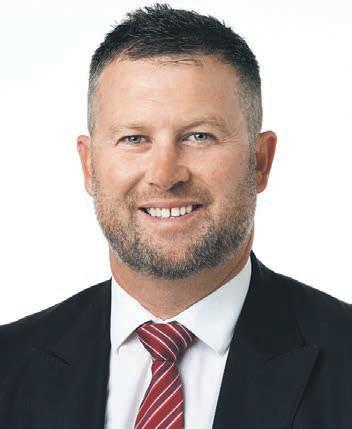



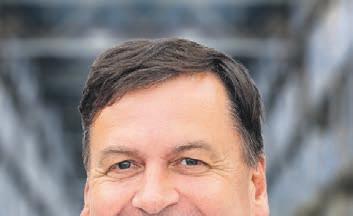









We’re a family of lateral thinkers, industry specialists and playmakers who know that commercial sales and leases are the result of helping businesses and individuals succeed.
Commercial property investment potential
When asked this week, “Why is Property Brokers a great choice for commercial property investors interested in optimising their investments today,” Waikato and Bay of Plenty commercial manager Alan Copeman was immediately forthcoming: “We’re a family of lateral thinkers, industry specialists and playmakers who know that commercial sales and leases are the result of helping businesses and individuals succeed. Our market intelligence and regional knowledge translate into real results for our clients.”
His key advice to investors: Ensure that you allow for interest rate movements and that you are not over-committing in borrowing.
Alan believes interest rates will continue to put pressure on the yields investors are looking for. He anticipates that as building costs start to



level, this will improve the situation in the new build space, ensuring an easing of the upward pressures on rental rates.
Industrial property investment update
Philip Hunt, the company’s commercial and industrial consultant in Tauranga’s fastgrowing Tauriko industrial area, is adamant that although commercial retail is slow – a bi-product of changing consumer habits resulting from lockdowns and increased online shopping volumes – industrial remains the darling of the sectors. This can be evidenced by the doubling in size of his Tauriko team in the last year.
“We’re getting 4-5 tenancy enquiries daily now that Tauriko can offer real economies of scale. Businesses are desperate to relocate to Tauriko now the roading and infrastructure are in place,” he says.
“I’m loving being here – for me, it’s about the relationships, not the transactions. I just want to look after people.”
Philip says that although there is limited support for investors from financial institutions unless they are well established, tenancy enquiries are booming at the moment. His advice to prospective tenants is, “Don’t take too long to commit – you risk missing out!”
He estimates 60% of his clients are Portrelated businesses. He praises the Port of Tauranga for its foresight: “They have enabled us to build a bubble of positivity.”
Over the years, we've received over nineteen REINZ awards and are consistently in the top 1% of agencies year after year.









By John Carran, Director, Wealth Research at Jarden.
John is part of the team supporting Jarden’s Wealth Management Advisors in Tauranga.
In its monetary policy announcement last month, the Reserve Bank of New Zealand (RBNZ) raised the Official Cash Rate (OCR) by 0.25% to 5.5%. To ensure inflation is curbed, the RBNZ expects the OCR to remain at 5.5% until the September quarter of 2024.
The decision to raise the OCR was broadly in line with most economists’ expectations. However, after the previous week’s Budget and recent signs of surging net inward migration, market expectations had reflected the probability of a chunkier 0.5% OCR increase. In addition, many economists expected the RBNZ to signal further OCR rises in the future.
Consequently, financial markets were surprised by the less aggressive OCR announcement, which caused short-term and long-term interest rates to fall materially immediately afterwards. The New Zealand dollar also fell significantly against major currencies.
Things moving in the right direction
In making the OCR decision, the RBNZ Monetary Policy Committee (MPC) expressed its view that inflation is likely to continue declining from here.
While the MPC sees core inflation pressures remaining until capacity constraints ease
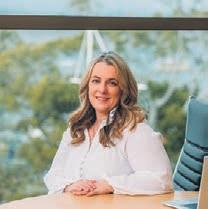

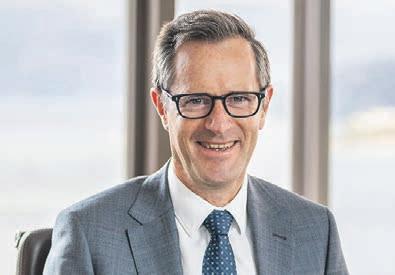
further, it acknowledges there are signs labour shortages are easing and job vacancies are declining.
In addition, the MPC notes consumer spending and residential construction activity are slowing down. Businesses have recently reported a lack of demand, rather than labour shortages, is now the main constraint on business activity.
The RBNZ still see the economy slipping into recession later this year, but is expected to be milder than it previously predicted. It sees the unemployment rate peaking at 5.4% in the December quarter of 2024, which is lower than the peak it previously forecast.
The RBNZ’s outlook remains softer than the Treasury forecast in the Budget. Although the Treasury see a weaker economy ahead it expects a recession to be avoided.
After this year’s Budget, there was commentary that its near-term stimulatory effect on the economy may sway the MPC towards a higher OCR this year.
Surging net inward migration was also seen as potentially leading the MPC along a tighter monetary policy path. However, the MPC downplayed these influences for several reasons.
Net inward migration has risen rapidly in
recent months, running at an annualised pace of around 130,000 in the three months to March. However, the MPC expects the surge in immigration to be temporary as it reflects the recent easing of immigration rules to alleviate labour shortages in some areas. Migration is something the RBNZ will watch carefully, as it notes the extent and impact of future migration on the economy and inflation pressures is uncertain.
While the Budget adds stimulus to the economy this year, declining surpluses over the following three years mean the fiscal position will likely be contractionary for the economy over that period.”
The MPC also noted that, while the Budget adds stimulus to the economy this year, declining surpluses over the following three years mean the fiscal position will likely be contractionary for the economy over that period.
Another matter on the MPC’s radar is the potential impact of repair and rebuilding after the severe weather earlier this year in the North Island. The MPC noted that spending would occur over several years, which means pressures on resources would be spread over time.
Overall government spending is expected to decline in inflation-adjusted terms and in proportion to the economy, which should help to dampen inflation
Therefore, the MPC is confident that with interest rates remaining at a restrictive level for some time, consumer price inflation will
return to within its target range of 1-3% per annum, while supporting maximum sustainable employment.
The peak OCR has arrived
Last month’s MPS and OCR decision signal the RBNZ is most likely done with raising the OCR in this cycle. It will be in “watch and wait” mode as it observes the lagged impact on the economy and inflation of the incredibly rapid OCR increases over the past 19 months.
While the RBNZ do not see the need for OCR cuts until the second half of 2024, we think a slowing economy and fading inflation may persuade the MPC to decrease the OCR as early as the first quarter of 2024.
For mortgage holders who are suffering from the rapid lifts in their interest costs, the RBNZ’s decision to rule out further OCR increases will provide some respite. Further mortgage relief, particularly for fixed term mortgages, may arrive toward the end of this year if inflation continues its downward trend as the RBNZ predicts.




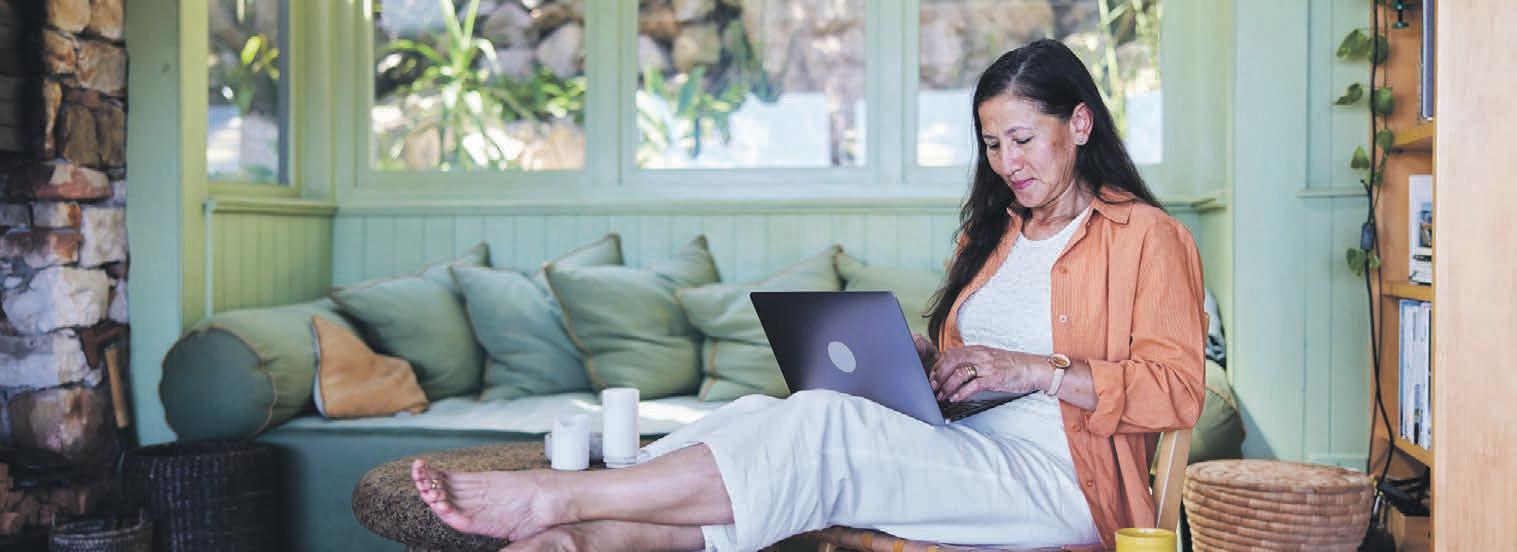

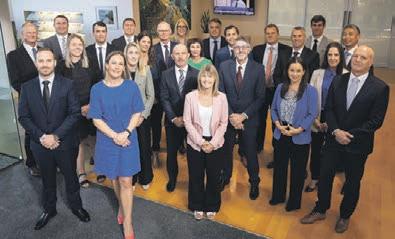
Very soon, Kiwis who have been living in Australia for four years will be able to apply for citizenship through the recently announced fast track process.
This will bring all the benefits of being an Australian citizen that have otherwise been unavailable for Kiwis, such as access to welfare support and student loans for example and will be a very compelling proposition for many Kiwis living over the ditch and those who are considering the leap.
But as with most things in life, where there is a positive there is often a negative. Before rushing to apply for Australian citizenship, anyone eligible should ensure they consider the tax implications of doing so, especially if they have assets left behind in New Zealand.
How are Kiwis taxed in Australia?
Broadly speaking, Kiwis living in Australia typically qualify for some very concessionary income tax rules. Anyone tax resident in Australia is usually subject to Australian tax on their worldwide income. But Kiwis that are not permanent residents or Australian citizens often qualify to be “temporary” tax residents.

The key benefits of being a temporary tax resident are:
1. They can usually exclude their foreign investment income from their Australian tax returns, such as interest, dividend or rental income from New Zealand (or anywhere else); and 2. Overseas assets are generally not subject to Australia’s capital gains tax (CGT). What happens at the moment when a temporary tax resident becomes an Australian permanent resident or citizen is that they lose the benefit of
being a temporary tax resident. Their foreign income will become taxable in Australia, although they may get a foreign tax credit for tax paid in New Zealand or elsewhere on that income to help offset the Australian tax liability.
But the biggie is CGT – if they have rental properties in New Zealand for example, or have kept their house or bach here, these could become subject to CGT on any gain in value from the date of losing their temporary tax resident status.
The tax consequences of

> BY ANDREA SCATCHARD
Andrea Scatchard is a Tax Partner at Deloitte, based in the Bay of Plenty. She can be contacted on ascatchard@deloitte.co.nz
the policy change, or indeed whether there might also be tax law changes, were not commented on when the policy was announced.
At the time of writing this article my colleagues in Deloitte Australia were still to receive clarification from the ATO as to how Kiwis applying for citizenship would be affected and, in particular, at what point they will cease to be temporary tax residents.
Should New Zealanders apply for Australian citizenship?
Obviously there is no single right answer here, as everybody’s circumstances are different. But some of the factors to consider include:
1. The level of non-Australian income – how much tax is paid on that income in New Zealand or elsewhere, and the relative difference between the tax rates in
the two countries will be important considerations; and
2. The level of non-Australian assets – if a Kiwi has significant New Zealand assets that will become subject to Australian CGT, and which would not be taxed here, then becoming an Australian citizen could be quite costly in the long term.
A word about trusts
Australia taxes trusts and trust distributions are very differently to New Zealand. The first key difference is that if a trustee of a New Zealand trust moves to Australia, that trust may become subject to tax in Australia even if it has no income from Australia. Any Kiwis with family trusts here should get advice about what to do before moving to Australia – they may want to change trustees or move assets out of the trust.
The second key difference is that a Kiwi in Australia may be taxed on distributions received from offshore trusts, even if these are capital distributions. It is really important to consider this before making any distributions from New Zealand trusts to beneficiaries in Australia.
Parting words
Applying for Australian citizenship really is a case of buyer beware – do your homework, get specialist and up to date Australian tax advice specific to your situation and weigh up the pros and cons. If you have significant assets in New Zealand, and don’t intend or expect to call on the welfare system in Australia, the answer may surprise you.
See also: www.bopbusiness news.co.nz/news/oz-changescould-stress-kiwi-job-market/
Danish Furniture Ltd’s flagship showroom at 53 Unutoto Place, Tauriko is Tauranga’s best-kept furniture secret – with managing director, Drew Copestake, only importing the highest quality, award-winning Danish furniture for commercial and residential use.
The Danish design philosophy emphasizes clean lines, high-quality craftsmanship, and the use of natural materials such as wood, leather, and stone. It also values simplicity and functionality, with a focus on creating objects that are both beautiful and useful.
We import two excellent Danish brands – HOUE and Skovby.
Our HOUE & Skovby indoor & outdoor furniture are well suited to commercial environments such as offices or hospitality businesses. The design, material components, intelligent ergonomics and innovative styling will ensure these brand values are front and centre for your business too.
HOUE has a fantastic range of award-winning, contemporary outdoor furniture. Their top-selling CLICK range has 13 standard colour options to fit any décor palate.
The HOUE Project collection is a selection of high quality indoor & outdoor furniture suitable for commercial use. Robust powder coated aluminium, UV protected

polypropylene lamellas and environmentally sustainable bamboo components keep the maintenance to a minimum, and the lightweight aluminium frames make our furniture easy to handle. Their award-winning MyTrash range has components made from post-consumer plastic waste and includes a reassuring 5-year manufacturer’s warranty. Skovby, named after the village where the founder began mak-
ing furniture in Denmark in 1933, is celebrating 90 years this year. Skovby literally means ‘forest village’, which is an appropriate brand name when you make beautifully crafted wooden furniture.
Skovby’s tables feature patented innovative extension systems and superb wood craftsmanship. Their patented table extensions’ level of functionality is not found elsewhere. The #112 four-seater table can extend to accommodate
14 seats. The top-selling #33 table seats four-six chairs. Turn a dial and out comes an extension that will accommodate nine chairs. A very practical feature for meeting rooms to accommodate small or large groups.
Skovby chair designs are tested at the Danish Furnituremakers’ Quality Control facility, where among other rigorous tests they are subjected to 50,000 tilting pressures.
Skovby’s chairs are approved for use in public spaces, with construction especially strong and durable, they at the highest quality level for commercial or residential use.
There are many cheap furniture imitators in the market – made to look like the real thing – but at best, they’re a knock-off and readily break. The HOUE indoor furniture and the Skovby range are manufactured in Denmark. Skovby is one of only three Danish manufacturers who still make their furniture in their own factories in the village of Skovby – while most brands now outsource their manufacturing to Eastern Europe or China. So, you’re really getting the highest quality, authentic furniture available.
Danish Furniture sells direct the public and trade from the Tauriko showroom, works closely with interior designers for commercial proj-
ects, and wholesales to 18 retailers nationwide.
We will work with you to identify your unique requirements for your space to provide the most appropriate furniture solutions and can provide DWG 3D files for HOUE & Skovby for modelling the suitability, colour and quantity requirements for any commercial project.
Born and bred in Tauranga, I’m proud to be in business here and to have brought these prestigious brands to New Zealand.

Rotorua Business Pulse Survey:
RotoruaNZ, in partnership with the Rotorua Business Chamber recently released the third Rotorua Business Pulse Report, providing the latest insights from Rotorua’s business leaders.
The Rotorua Business Pulse initiative serves as a key barometer for local businesses, providing a platform for business leaders to share their perspectives on Rotorua’s economic health. The most recent survey, which ran from March 22 to April 14, collected responses from 93 Rotoruabased businesses.
Andrew Wilson, RotoruaNZ Chief Executive, hailed the city’s economic resilience, reflected in a noticeable upswing in confidence, largely thanks to the recovery the tourism sector.
“With the growth and resurgence of our vital tourism industry, we are witnessing renewed optimism in our business community”, said Wilson.
Despite the rise in confidence, local businesses are navigating a complex economic landscape marked by escalating costs related to staffing, inflation, and debt. Businesses have shown innovation and adaptability in response to these challenges, with some exploring solutions within the artificial intelligence space and product innovation related to climate change.
Wilson acknowledged these challenges, saying, “While we continue to remain optimistic about Rotorua’s economic future, there are significant economic headwinds around inflation, talent and borrowing costs which are leading to very real concerns around profitability and work pipelines.”
Rotorua Chamber Chief Executive Bryce Heard also responded “the Rotorua business has confronted more setbacks than most NZ businesses over the past 3 years. This makes it even more remarkable that the survey partakers’ degree of confidence in themselves to navigate the next year, is way higher than their confidence in the national economy. We are justifiably proud of Rotorua’s business resilience and ability to bounce back.
It is to be hoped that we can work closely with the new Council and the business community, to finally get the CBD recovery underway and step up the Rotorua Brand.”
Participants voiced a need for investment in infrastructure, especially within the Central Business District (CBD), ensuring that Rotorua is vibrant and attractive to visitors and residents. Tied in closely with this, rebuilding reputation and restoring image also came through as top priorities for business leaders.
Climate change emerged as a notable factor in operational expenses and supply chain disruptions for a third of the city’s businesses. Furthermore, one in five businesses cited issues with flight schedules and reliability as the reason for choosing not to use Rotorua Airport.
See the full Rotorua Business Pulse Report at www.rotoruanz.com/business-pulse-survey.

It’s clear Aotearoa New Zealand has a big productivity issue. Small business owners and employees in the Bay of Plenty and across the country are working long hours with less to show for it. As a result, we placed 27th out of the 63 countries in the 2022 IMD World Digital Competitiveness Rankings, slipping down from 19th in 2018. There’s no doubt this is a problem which needs to be addressed –but the question is, how do we solve this?
Xero recently worked with the New Zealand Institute of Economic Research to understand how digitalisation could impact our local economy, and the results were astounding.
The research revealed a 20 percent increase in the uptake of cloud-based digital tools could increase New Zealand’s GDP by $7.8 billion through improved productivity.
Digitalisation is instrumental when it comes to improving productivity, equipping businesses with the tools they need to thrive in the modern era.
We need to be following in the footsteps of Denmark and Singapore, both of which are great examples of what strong, committed government investment into digitalisation can do for an economy.
Aotearoa can become a world-leading digital nation, and better yet, businesses in the Bay of Plenty have the power to lead the charge. However, this is easier said than done.
Digitalisation is no mean feat and it can be daunting to commit to overhauling processes without knowing the outcome.
That’s why our Government needs to create policy and encourage digitalisation investment to strengthen our economy by billions.
Looking at the research, there’s a clear roadmap for our Government to consider in the short term, which paves the way for improving the digitalisation of Aotearoa.
This starts with developing a New Zealand Productivity Solutions Grant and foundation plan to set small businesses up for successful digitalisation.
A trusted resource like a Chief Technology Officer-as-a-service is also a crucial step

> BY BRIDGET SNELLING Bridget Snelling, Xero New Zealand Country Manager.
In the long term, the Government needs to actively invest in digital literacy at all levels of society, meaning everyone from primary schools to nursing homes will be equipped with basic digital skills.”
to ensure business owners can engage with digital consultants who provide customised advice and guidance.
This is followed by building an integrated public service system to boost productivity and trust amongst our local businesses.
In the long term, the Government needs to actively invest in digital literacy at all levels
of society, meaning everyone from primary schools to nursing homes will be equipped with basic digital skills.
Government should then promote and subsidise gaining digital skills, as part of learning in the workforce and education. We also need to review the level of investment and regulatory frameworks of government research and development of digital technology.
And lastly, improve the competitiveness of the tech sector immigration policy.
Although digitalisation requires both an investment of money and time, the payback period is relatively short. It can take less than two or three years to see a positive return, helping rejuvenate the economy by billions.
The reality is, all around the world economies are rapidly digitalising – if we don’t do the same, businesses in the Bay of Plenty and across Aotearoa New Zealand are at risk of being left behind.
Our Government needs to show more support for our digital progress and introduce policies that support the expansion of New Zealand’s digital economy.
Only then will we be able to unlock the full potential of our economy.

The learning and development industry would have you believe investing in staff training is the perfect antidote to talent shortages and AI uneasiness. However, business leaders are about to learn a painful – and costly – lesson.
Pity the human brain. It’s suffered more than a few headaches recently.
First there was the lockdown lobotomy. Then it was given marching orders to drain across the ditch. Now, it’s under threat from Chat GPT, Google Bard, and their artificially intelligent digital nomads.
Thankfully, a new saviour is on the horizon: A senior executive with an axe to grind and a staff training budget to spend. “Use it or lose it”, they like to say. But are they talking about the budget … or the workforce?
Burning a hole in your pocket
On the surface, everything looks fine: Businesses want to enhance their workforce capabilities, so they look to spend a bit of money on a skills upgrade. Good news, especially if you happen to run a training company. But the truth is more sinister:
Something akin to a monkey pulling a fish out of a river and saying, “Here, let me put you up in this tree before you drown”.
Although businesses have the best of intentions when it comes to employee training, all they’re really creating is an expensive exercise in suffocating their talent.
Swimming against the tide
Don’t believe me? When was the last time you TRULY learned something new in a training session at work.
We all remember the flipcharts, the post-its, the awkward icebreaker exercises and coffee that tastes like Rangataua Bay after a downpour. But did you actually take anything away from the training … except a crushing anxiety that you had a days-worth of emails to catch up on?
Sure, it might have been mildly useful. But you were unlikely to be standing on your chair, hugging your colleagues
and giving it the full ‘Tony Robbins meets Jon Bon Jovi concert’, were you?
Yet time and time again, we return to the training room, like walking back into a relationship we swore we’d left for good.
A lose-lose deal
Employee training is painful. It’s like going to the gym, but without the sunny upside of kidding yourself you might look good naked, if you go through enough torture.
Business leaders don’t want to pay for it (not enough budget). Employees don’t want to do it (not enough time). Trainers don’t want to deliver it (not enough passion).
Yet according to the New Zealand Productivity Commission, between $1.3 billion-$2 billion is spent by Kiwi businesses every year on staff learning and development.
That’s a lot of money to throw at something that generally produces an eye-rolling

> BY FREDDIE
BENNETT
Guinness World Record Holder, podcast host and bestselling author, Freddie is known as ‘The Profit Hunter’. He helps business owners enjoy more time, money and freedom by discovering and extracting hidden profits in their companies. Freddie@conqueryourmedia.com
reaction akin to telling a child they’re on their way to the dentist.
Employers won’t hear of it, however. Because they’re too busy telling the world how much they ‘value their people’.
Time to face facts: your DISC profile was shoved in the drawer. Your Myers Briggs report (ENTP, in case you’re wondering) fell apart after being used as an emergency coffee cup coaster.
But the world is changing fast. Employees need to develop new skills to help win at work and keep the Kiwi workforce competitive in the global economy.
Training, however, is not the answer. 30 years ago, perhaps. But in 2023, the last thing people need is more
knowledge. Your teams have all the knowledge they could ever desire at their fingertips, for free. Why pay for it?
Knowledge is a waste of time and money without two things: Mindset and Habits.
If your people are lacking the right mindset, they won’t have the confidence and courage to think differently.
If they don’t back-up their learning with the right habits, they will never apply the knowledge they obtain.
It’s like you’re sending your workforce to a lecture about press-ups, and expecting them to get stronger. But they only develop true strength if they have the mindset to practice, and the habits to keep doing it.
Taking the leap
Training companies can pull out all the stats, psychomet-
rics, and ‘tailored learning programmes’ they like, but they can’t hide the facts.
Traditional training is terrifyingly ineffective. We learn through challenges, puzzles, trial and error, experimentation and (whisper it) failure. Which lesson do you remember from your childhood: The 100 times your mother told you not to touch the hot stove? Or the time you touched the hot stove?
If you really want to develop a workforce that’s fit for the future, focus on their mindset and their habits. Let them get real. Allow them to screw up, laugh about it, and then screw up again. This is how we learn. But, as a leader, will you be brave enough to allow it to happen?
Perhaps there’s a training course that might help …
These days businesses expect to be in control when they consume digital services.
They want to be able to dial up services when they need them. This is an everyday experience for consumers who can, say, log into their mobile phone account and change their plan, buy more data or organise international roaming.
Typically, that’s not how most businesses order and organise network services. They must call a network operator, discuss their needs, negotiate options, then commit to a contract.
But modern businesses want data and services when they need it, and want to be able to add it, remove it and change it, all quickly and seamlessly.
It’s where the 2degrees business team is focussed; on its self-service platform for what’s known as software defined networks. 2degrees Chief Business Officer Andrew Fairgray says: “We are bringing the smarts we are all use to as consumers, to larger, more complex businesses, essentially to make their lives easier and more efficient.”
Key to this for 2degrees is its platform called “Flex”, a front-end interface initially developed for Freightways, a major customer.
Freightways wanted a digital platform which allowed it to manage a large fleet of mobile devices, and now that platform has been

expanded to include more products, and is available to 2degrees business customers.
“The goal is to provide customers with comprehensive on-demand network infrastructure”, says 2degrees CIO Steve Kurzeja.
“Everything on the network is software enriched. We have a network that reaches every data centre in the country and our network can reach anywhere on the UFB footprint, which covers close to every business in New Zealand.”
“A customer from the top end of town might come to buy 100 gigabit Ethernet ports if they need to shift a huge workload from one point to another, but smaller customers can also benefit.”
Kurzeja says there’s nothing to stop customers with more modest needs ordering secure point-topoint links from any home or office on UFB to a data centre or a cloud on-ramp taking them to Australia, the USA or beyond.
“It’s still early days, but if a
customer wants to order, say, a circuit from London, we can do that now. We have partners from overseas coming to us in New Zealand wanting to set up circuits through our local ecosystem. Our network footprint already reaches across the UK, Australia and the US. We have other relationships connecting elsewhere, so if a customer needs a line to Singapore, we can connect through Australia and the ASC submarine cable.”
He says that because 2degrees
We have a network that reaches every data centre in the country and our network can reach anywhere on the UFB footprint, which covers close to every business in New Zealand.”
is a software-led business, it can move fast, take customer feedback and iterate. “We learn from our customers and change. They can see us continually releasing new things and listening to their needs, which is exactly what it means to be customer centric.”
Fairgray sums it up: “Software defined networks gives 2degrees customers a competitive edge putting customers in control of their agility, innovation and application needs and futureproofing their connectivity.”

“There
is no bad weather, just bad choice of clothing” – a Norwegian saying which I think applies to the situation we currently find ourselves in as a business community.

> BY NICK KERR
Nick Kerr is regional manager for DebtFree NZ Ltd and director of International Private Investigations Ltd. He can be reached on 021 876 527 and Nick@debtfreenz.com
he financial landscape is a bit scary at the moment, let’s be fair. We have people living in $800k houses with $900k mortgages, emergency housing is heaving at the seams and there are homeless encampments all over the Bay.
People are hurting and it’s evident. Being in the credit management, fraud investigation and repossession industries I see firsthand the realworld effects of the confusing and needlessly complicated economic data that spews from our devices daily.
The number of commercial evictions, liquidations, collections and large commercial dispute cases that IPI, NZ REPOS and Debt Free NZ are being asked to become involved in are increasing, both in frequency and size. People that I know well as successful business owners are downsizing their businesses with an aim to mothballing them for the next few years. There is real fear in the business community, but all hope is not lost.
Just like the GFC in 2008, there will be businesses that make it and there will be businesses that don’t. From my experience and research, the ones that survived back then were more systemised and process driven, with a better understanding of backcosting and an ability to respond to supply cost and quantity. Of course, a large part of surviving a credit crisis is credit control. Here are some tips that I recommend to get through the storm – a credit umbrella if you will.
1. Meet with your accountant and financial advisor and do a full analysis of your business financial data,

make sure charged rates are adjusted with cost rises including indirect costs like fuel, etc.
2. Do an analysis of your client / customer list and make sure that all clients that pay on credit (20th of the month following, seven days etc) have agreed terms of trade and that these have been reviewed or updated within the last three years.
3. Ensure all major accounts (any accounts that would seriously affect your business should they become unpaid or liquidated) are secured on the PPSR and have a credit monitor on them to alert you to any financial gremlins that pop out of the woodwork.
4. Only give credit when you need to. If a client /customer is a one-off or private individual, then payment on completion or delivery is often more appropriate than offering credit.
5. If you are in the construction industry, become very familiar with the Construction Contracts Act 2002 and the new Construction Contracts (Retention Money) Amendment Act 2023 –in this industry how you charge is very, very import-
ant. If you are reading this and do not know how important a payment claim vs an invoice is, please look into it asap.
6. If money gets tight and you are considering debtor finance, factoring or otherwise borrowing against invoices, investigate it in depth with a trusted advisor. Like every tool, it has its uses but also has its risks. A solid collection campaign can sometimes be what you need to stitch the wound rather than applying a Band Aid.
7. COMMUNICATE! If things get bad and you can’t pay, tell your suppliers what is going on. Make a payment plan and stick to it. If they call, answer the phone. People can deal with what they can understand. Keeping people in the dark can inflame an already stressful situation.
The above is simply a guide based on my own experience of nearly two decades working with small businesses through some very tough times – this is not legal advice, just Nick’s advice.
Keep safe everyone. If it’s raining, wear a jacket. Just a thought


T> BY STEVEN VINCENT
Steven Vincent is the founder of GoTo Car Share. He can be reached on steven@goto.nz
he future of urban mobility is undergoing a significant transformation, driven by technological advancements, changing consumer preferences, and the urgent need for sustainable transportation solutions. In this article I want to explore the various options and what will become a dominant force in shaping the future of transportation and its impact on urban mobility.
In any large fast growing city like Tauranga, urban mobility planning is equally exciting and daunting at the same time. A variety of organisations, ranging from technology companies, to vehicle manufacturers, to city leaders and planners, are currently in a race to find the best solutions that will transform the way we move around. Below are some solutions that could possibly solve some of the problems we are encountering.
As autonomous vehicle technology continues to evolve, Shared Autonomous Vehicles (SAVs) will revolutionise the transportation landscape. SAVs will provide on-demand transportation services without the need for a human driver. This transformative shift will enhance convenience, efficiency, and affordability, making vehicle sharing even more appealing to urban dwellers.
Mobility-as-a-Service
(MaaS) platforms will offer a seamless experience for users to access various transportation modes, such as public transit, shared bikes, scooters and cars, and even air taxis. MaaS integration will provide a comprehensive solution for urban mobility, allowing individuals to plan, book, and pay for their entire transportation journey through a single platform.
Advanced technologies, such as artificial intelligence and machine learning, will enable platforms to learn user preferences, predict travel patterns, and offer tailored recommendations. From vehicle type to interior ambiance, users will have the ability to customise their mobility experience.
With a growing emphasis on sustainability, future vehicle sharing will predominantly feature electric and low-emission vehicles.
Providers will invest heavily in electric vehicle infrastructure, including fast-charging stations and vehicle-to-grid integration. By promoting the use of clean energy and reducing carbon emissions, electric vehicles will play a pivotal role in achieving sustainable urban transportation.
Peer-to-peer (P2P) car sharing will become more prevalent, allowing individuals to rent out their personal vehicles when not in use.
P2P car sharing will unlock
a vast pool of underutilised vehicles, promoting efficient resource allocation and reducing the overall number of cars on the road.
Car sharing will extend beyond traditional cars, embracing hyperlocal and micro-mobility solutions. This includes shared electric bikes, scooters, and even small electric pods designed for short-distance urban travel. These options will enhance accessibility and provide a diverse range of shared vehicles suited for specific use cases and distances.
With advancements in autonomous technology, integration with MaaS platforms, customisation options, sustainable fleets, and the emergence of peer-to-peer and micro-mobility solutions, shared mobility will transform the way people move in cities. By prioritising convenience, sustainability, and affordability, car sharing will play a central role in creating smarter, greener, and more livable cities of the future. As we embrace this transformative shift, the possibilities for reimagining urban mobility are endless.
I’m looking forward to delving deeper into this fascinating subject of sustainable transportation in the coming months and welcome any feedback or contributions you have to this topic.

Tauranga is a great place to live, which is one of the reasons it is New Zealand’s fastest-growing city. But as we all know, growth brings challenges – in our case, a housing shortage and affordability issues, traffic network congestion and high carbon emissions for a city of our size, which we will need to bring down.
By ANNE TOLLEY, Tauranga Commission Chair
Those challenges inevitably have an impact on business. Our shortage of affordable houses for renters and buyers makes it difficult for businesses to attract staff who are not already living in the city.
Congested roads not only affect our lifestyle, but also reduce business productivity and the ability to deliver timely services.
And of course, we have a responsibility to the planet, and a requirement to comply with the Government’s directive to reach carbon-zero status by 2050.
Currently, more than 60% of the city’s carbon emissions are from transport activities

gional highway connecting the productive base of the North Island to the Port of Tauranga, as well as a rapid transit corridor for vehicles, public transport and active transport modes (cycling and walking) from Tauriko through to the city centre and on to the Mount.

and most of that relates to road use.
Multiple long-term solutions are required to deal with these issues, but in the shortto medium-term, accelerated investment in SH29 improvements will certainly help meet our immediate challenges. This would involve creating a grade-separated inter-re-
The why for this investment is simple – it would enable residential development in Tauriko West and along the Te Papa peninsula which would allow up to 25,000 homes to be built over the coming years, connecting to around 12,500 extra jobs and all of the city’s key facilities – hospital, supermarkets, shopping centres, high schools, the port, the CBD and Te Manawataki o Te Papa, the University of Waikato and on to Blake Park,

Bay Oval and the Mount’s other attractions.
An efficient rapid transport route with enhanced public transport services would also help us to lower carbon emissions, vehicle kilometres travelled and reduce congestion and facilitate housing intensification withing our existing city footprint, which makes this a winning proposition all-round.
The Council and the Com-
mission are working with Waka Kotahi, other Government agencies and Government ministers to facilitate this investment, but right now the SH29 upgrade we need is still too far down the priority list to offer the timely solutions we need.
Our regional local government partners are right behind a reprioritisation of infrastructure investment, but to encourage the all-of-government
approach we need to get things moving, we also need national political commitment.
The business community could play a very helpful role in that, so when our political leaders drop by to drum up support in the lead-up to the October elections, tell them what the Western Bay of Plenty really needs – investment in an efficient SH29 connection, with all of the gains that will provide.
New Zealand has a well-documented and debated productivity issue. Productivity is broadly defined as the output produced per worker. In 2019 The New Zealand Treasury commented that, “New Zealand’s low productivity growth is a long-term problem that has been an issue across a timeframe of generations, not general elections. Raising our productivity performance is the biggest economic challenge facing New Zealand and will require a sustained effort on a number of fronts.”
It’s perhaps disturbing then that the Treasury website on productivity and the associated whitepapers on the topic has not been updated since 2019! It’s clearly not been their priority to focus on what they defined as, ‘the biggest issue facing the economy’.
But to be fair, it’s not Treasury’s sole responsibility to solve the productivity issue – picking up on the last part of the statement: “… it will require a sustained effort on a number of fronts”.
There are many components and parties that contribute to productivity, it is not just a case of each worker working harder; there’s the ‘smarter, not harder’ cliché, as well as optimizing the use of technology and what (and how) products and services are produced.
The franchising sector I would argue is well and truly pulling its weight in regard to productivity; often being industry-leading in terms of product offering, service delivery and, importantly, innovation.
If we do however come back to a ‘per-worker’ view of productivity, all things being

equal, we see the critical role that training and development of workers play in improving productivity. We can identify franchising as a superhero of productivity.
Let’s look at some comparative data: In 2021 there were a total number of 151,975 people engaged in apprenticeships. The New Zealand Franchising Survey covering the same period identified 156,820 employed in New Zealand franchises.
Every single one of those
employees would have received training and development of some type, ranging from basic first-start employee training, through to complex, world-leading, best practice methods of providing a wide variety of goods and services.
And then we can look at the franchisees themselves (who are not captured in that data): There are an estimated 32,357 franchised business units operating in New Zealand.
A Grant Thornton 2014 report on productivity sug-

> BY NATHAN BONNEY
Nathan Bonney is a director of Iridium Partners. He can be reached at nathan@iridium.net.nz or 0275-393-022
gested, “One of the greatest opportunities for New Zealand to raise productivity lies in educating the owners and managers of SMEs in the fundamental principles of running and growing a successful business.”
Well, it’s the core and essential role of every franchisor to successfully train their franchisees to grow and operate successful businesses.
Government policy settings need to support franchising’s role in training and development
Unfortunately, the current government and policy setting do little to support and encourage the training and development role played by franchising; in some circumstances policy settings such as taxation actually discourage it.
For franchisees, if we look at the apprenticeship schemes, these play a critical role in generating productivity but are in many circumstances not suited to fit hand in glove with the SME business model of many franchise structures, rendering the schemes inaccessible.
The same applies to training wages; they do not apply to employees who are being trained at work outside the parameters of an industry training programme. In a tight labour market, trying to pay less than minimum wage is unlikely to be very successful in attracting and retaining talent. There’s also a social implication that most brands would like to avoid.
I would suggest subsidising training costs along the lines of an apprenticeship model. Alternatively, providing tax incentives would certainly reward and further encourage training and development within the franchise sector. These don’t necessarily need to be on a franchisee level – how about applying a tax credit for employees that complete accredited training?
If we look at how initial franchisee training fees (what a franchisee pays a franchisor to learn and be trained in a system) are treated in terms of taxation, for the franchisor, training fees are at best usually cost recovery but treated as income.
For a franchisee New Zea-
It’s the core and essential role of every franchisor to successfully train their franchisees to grow and operate successful businesses.”
land tax policy is not as kind as in many other countries where initial training fees (and sometimes initial franchise fees) can generate tax offsets for the franchisee. Finally, if we look at the Government’s much self-applauded Apprenticeship Boost scheme in relation to boosting business productivity: as of March 2023, there were 57,040 participants. I’m not sure of the return on investment overall of the Government’s $230 million allocation in the 2022 budget, but a total of 40 of these are in business and management.
As the pandemic’s tail whips its way through our work psyche and habits, business owners are being challenged on what constitutes a viable, marketrelevant workplace in the bid to retain staff and attract new recruits.
Bayleys’ national director office leasing and real estate advisory, Steve Rendall says after an extended period of flux and staff routinely working from home, business owners are now grappling with what today’s office should ultimately look and feel like.
“We’re seeing a distinct flight to quality with companies seeking better functioning spaces to help get staff back to the office to collaborate and build culture.
“Some decision makers are trying to better understand likely working trends in the longer term before making wholesale changes, while others are reducing their footprints or clipping on flex space where required.”
Jonas Brodie, director and head of client relations at workplace strategy, design and construct firm StudioDB, says before designing or refitting an office space, the questions to be asked of clients are: what are the overall project objectives, how would you define success and why have an office?
“It’s a progressive journey and we encourage our clients to be transparent and share their business strategy which gives us considerable insight into how they may look to transition into a new way of working or remain status quo.
“We need to have tools that measure efficiency and performance because what can be measured, can be managed, so for a project to be successful, it is vital to come up with a data set that does this.
“We also delve into the roles of those within the office and ask what’s
best for the individual, their team, and the business overall so we can take an unbiased balanced approach and understand how activities are best done across those pillars.”
Brodie believes sustainability is the next big thing for office workplaces to nail and says, “our industry needs to be making measurable progress on sustainability while making it less complex and more affordable for all.”
Tim Ray, commercial manager for Platform Consulting Group says every business it works with has a unique way of working in the hybrid environment and requires a purposeful space built around work flow and human connection.
“The office environment now needs to be measurably better than the home office and be a place to reconnect with people so we design spaces with a welcoming entrance incorporating a high end hospitality experience for employees, and multiple collaboration points to make the commute worthwhile and to support the office day.”
Ray says new and remodel fitouts are investing in more flexible, multi-functional spaces with adaptable furniture and integrated technology.
“Think technology-enabled stand up/huddle spaces, digital whiteboard spaces for a visual connection in the open plan environment and smaller meeting rooms with better integration for video conferencing.
“Equally important are spaces to disconnect from tech’, with informal collaborative lounge space, and open areas in the office with casual seating

arrangements encouraging a playwork-rest workplace.
what is the unique aspiration for your workplace?”
Equally important are spaces to disconnect from tech’, with informal collaborative lounge space, and open areas in the office with casual seating arrangements encouraging a playwork-rest workplace.”
“With a 70-80 percent occupancy rate, clients see that more space can be dedicated to a structure that’s best for a team approach rather than the individual.”
Scott Compton, who leads interior design for architects Warren & Mahoney says the firm’s broad and connected team knows that every client group is a unique amalgam of many things.
“The key questions we ask clients now are essentially the same as they always were, but are perhaps more relevant today and revolve around presence, purpose, and innovation.
“Why will your people come to the office, what will the office need to do and provide for your people, and
Compton says individual productivity, collaboration, team culture, and wellbeing are all inextricably linked and businesses need as much of each of those as they can get.
“Collaboration is the pillar that’s still a work in progress, as virtual collaboration can be isolating for individuals and ideal hybrids do not yet exist.
“We urge each client to think carefully about the big, aspirational, unique idea for their office environment that will excite, inspire and engage their people.”
Source: https://www.bayleys.co.nz/ workplace/office/insights/ making-an-office-fit-for-purpose

Ronald Reagan may very well have said that the most terrifying words in the English language were “I’m from the government and I’m here to help”, but believe me there are many government agencies out there providing fantastic tools, advice, and services for small and medium sized businesses. Real, tangible, and valuable help.
In last month’s column I wrote about the resources and advice available from the Privacy Commissioner and this month it’s time to promote the services of CERT NZ. The Computer Emergency Response Team was set up in 2016 to receive cyber incident reports, track cyber security incidents or attacks and provide advice and alerts on how to respond and prevent further attacks. CERT NZ works with counterpart agencies across the world and other NZ agencies such as NetSafe, the Department of Internal Affairs and NZ Police.
CERT NZ’s “Two Steps, Too Easy” campaign runs from 22 May 2023 to 22 June 2023. This campaign supports SMBs by promoting examples of companies who are using Two-Factor Authentication (2FA) to protect their business and customer data.
Visit their website at www.cert.govt.nz to view their resources and subscribe to their updates. You can customise the information that you are presented with by selecting Individual, Business or IT Specialists.
This campaign includes advice from SMB owners who received dodgy invoices, fraudulent customer orders, contact from alleged suppliers who weren’t legitimate and suffered financial and/or data loss. They’re all saying that implementing 2FA plays an important part in reducing risk and relieving anxiety about future attacks. Their stories and experiences are relatable. 2FA is a security system that requires two distinct forms of identification in order to access something. The first factor is a password, and the second factor may include a text sent to your smartphone or email and biometrics using your fingerprint, face or

> BY YVONNE BLANCH
Yvonne Blanch is an Account Manager at Stratus Blue. She can be contacted at yvonne@stratusblue.co.nz

retina. While 2FA does improve security it is not fool proof. Not implementing 2FA is, however, foolish.
Who are you going to call if you ever receive a message on your computer that reads something like, “Your network has been penetrated and your files are encrypted by x. If for some reason your read this text before the encryption ended, this can be understood by the fact that the computer slows down, and your heart rate has increased due to the inability to turn it off, then we recommend you move away from
the computer and accept that you have been compromised.”? You’re going to need government help as well as the assistance of your trusted IT support company.
You have a responsibility to your business, your staff, your clients and yourself to take cybersecurity seriously before you need it.
Ronald Reagan also said, “To sit back hoping that someday, someway, someone will make things right is to go on feeding the crocodile, hoping he will eat you last –but eat you he will.”
A fledging Tauranga-based distillery has made global waves after taking out a double gold award for their dry gin at the 2023 San Francisco World Spirits Competition.
Clarity Distillery Company co-founders George White and Stephanie Downer only launched their first line of spirits in March, making a splash in the New Zealand market and entering the competition just three weeks later.
The double gold designation announced in late April, is awarded to the few entries that receive gold medal ratings by all members of the judging panel. This year, there were more than 5500 entries from around the world.
“Winning any award is amazing, but double gold is truly phenomenal and exceeded our expectations,” George says.
George says despite feedback from friends and family that they should enter their more traditional 2023 gin, they had a gut feeling to go with their dry gin. “We created our dry gin to be enjoyed in both summer and winter, with warm and comforting notes for winter and the option to add a slice of lemon or tonic in the summer.
Receiving an award in the competition not only helps brands stand out in international markets, but is a critical next step for any producer to earn recognition in the

In May the Acorn Foundation announced the recipients of the 2023 Page/Acorn Engineering Scholarship. The scholarships are awarded annually to second-year apprentices at local engineering firms, thanks to local Acorn donors Bob and Pat Page. Recipients and their respective workplaces will receive funding for two years to assist with expenses and equipment.
Recipients of the 2023 Page/Acorn Engineering Scholarship are:
• Adriaan Meyer, Otūmoetai: Boshier Engineering
• Bailey Snowling, Te Puke: Page Macrae Engineering
• Eron Manabat, Ohauiti: Page Macrae Engineering
• Ezra Keenan, Whakamarama: Robert Page Engineering Limited
• Joshua Conroy, Te Puke: Page Macrae Engineering
• Lewis Graham, Poike: Page Macrae Engineering
• Te Mawae McAllister, Te Puke, Impact Engineering
An evening awards ceremony is held every second year to celebrate scholarship winners with their families and workplace representative – this event will take place next year.
The Page/Acorn Engineering Scholarship was established in 2008 by the late Bob and Pat Page to reward and encourage apprentices who go above and beyond expectations. Bob Page cofounded local firm Page and Macrae Engineering in 1953 and was passionate about seeing young people succeed.
Nearly 70 apprentices and their workplaces across the Western Bay of Plenty have received support thanks to the generosity of Bob and Pat Page. Lori Luke, CEO of the Acorn Foundation, said “Every year we look forward to awarding these deserving apprentices this scholarship, and we get a lot of satisfaction from seeing them succeed in their chosen career. Bob and Pat Page would be absolutely thrilled that their dream of assisting local apprentices to achieve their goals has come so far.”
Manuka Performance is a nutrition company located in Whakatane, New Zealand. The company develops and manufactures a range of natural nutrition products based around the globally recognized health properties of Manuka Honey.
Many New Zealand start-up brands face challenges in connecting with global markets. However, Manuka Performance has powered through this challenge by partnering with Eastern Bridge Global, an experienced international expansion firm with dedicated expertise in Asia.
By leveraging Eastern Bridge Global’s consumer research and market knowledge, Manuka Performance has positioned itself as a disruptive and standout brand in the supplement market.
industry and with consumers.
George says while Clarity Distilling Company has just started out, they have big plans for the brand, branching out further in New Zealand and internationally.
“We are immensely proud to showcase our gin to the world and it’s an honour to showcase it as a product of New Zealand.”
With a background in business management and childcare, George and Stephanie decided 2023 was the year to take the leap with their distillery.
Armed with a passion for gin and shrewd business acumen, the pair have poured all their efforts into the start-up and are thrilled to be recognised by one of the world’s most prestigious spirits competitions.
Founded in 2000, the San Francisco World Spirits Competition is the oldest and largest competition of its kind.
The San Francisco World Spirits Competition is one of the most respected and competitive spirits competitions in the world, with entries from more than 30 countries.
The judges evaluate the entries blindly, based on a range of factors, including aroma, taste, finish, and overall quality.
The partnership has allowed Manuka Performance to effectively localise its marketing strategies for its target consumers in Asia, including digital marketing tactics such as social activations with Key Opinion Leaders (KOLs) and social media influencers.
Eastern Bridge Global CEO Lewis O’Donnell has praised the partnership, stating: “Manuka honey has already gained popularity among consumers in China, who are aware of its numerous benefits. This has helped Manuka Performance mitigate barriers to entry and introduce its sports-specific Manuka Honey supplement into the market with success.”
Manuka Performance Co-Founder and CEO Tristan Vine is excited about the partnership.
“China presents a huge and exciting market for our nutraceutical products across all categories. It also presents many challenges to enter, maintain & grow. To execute successfully it’s crucial to partner with the right people who have experience, knowledge and established logistics & channels across the region,” he said.
This partnership represents a significant milestone for Manuka Performance and its mission to provide premium functional supplements to athletes and health-conscious consumers worldwide.
In May Priority One chief executive Nigel Tutt highlighted findings of the region’s latest quarterly economic data.
According to Tutt, the economic results show Tauranga and the Western Bay of Plenty region remain in good economic shape, despite the impacts of inflation, higher interest rates and a weaker kiwifruit season.
“While we might have expected some downturn, given the signalling by Government and the Reserve Bank, there has not been much evidence of that to date, both locally or nationally, with economic growth for Tauranga and Western Bay of Plenty at 3.9% vs the national rate of 2.9% for the latest quarter. The job market is still strong, with all employment indicators either the same or stronger quarter on quarter”, he noted.
“Relatively strong economic data across the country means that we can expect inflation to stick around and monetary policy to be tight. While businesses will be more cautious than before due to harder conditions, the tight employment market and its effect on staff attraction and retention should be at the forefront of business thinking.”
The recent tightly targeted Budget delivers support for those who need it most, as well as a small tax surprise says Chartered Accountants ANZ NZ Country Head Peter Vial FCA.
“Delivering support to those that need it without stoking inflation, while responding to the cyclone and flooding was always going to be the challenge in this Budget.”
“Although this looks like one of those budgets where no one will be hugely happy, that’s an indication of the constrained situation the country is in.”
“Unlike last year’s budget which included a heavily criticised one-off cost of living payment that went to a lot of people who didn’t need it, this year’s budget is much more targeted.”
“Some measures such as removal of the prescription charge will benefit everyone, but most are aimed at those most in need. Public transport subsidies for children and young people have the added benefit of encouraging better environmental outcomes.”
“Tax cuts were obviously unaffordable and would have stoked inflation, but there was a little tax surprise in the alignment of the trustee tax rate with the 39% top marginal tax rate.”
“Whether this is a ‘major tax change’ is a moot point.”
“The $5.7 billion spike in income taxed at the 33% trustee rate in the first year of the 39% top marginal tax rate is all the evidence that the Government needed to respond.”
“It is a relief to hear that the trustee rate change will be subject to full Select Committee scrutiny. This should allow the opportunity for any unexpected consequences and issues to be addressed.”
“Not addressing other distortions in the tax system confirms that this Government, like others before it, has put broader issues with the tax system in the too hard basket.”
Linda Flegg, Chair of NZ Avocado Growers’ Association announced in May the resignation of their CEO Jen Scoular after 12 years in the role.
“Jen has served us tirelessly over the past 12 years and her achievements along the way are many. When Jen took up the role after a four-year term as a trade diplomat in Hamburg, Germany, our industry was struggling and lacked engagement, communication and systems, which gave Jen a lot to focus on,” says Linda Flegg.
Under her leadership industry value increased from $82m in 2011-12 to $231m in 2021, and the New Zealand market value from $19m to $62m in 2021-22. During her tenure the industry successfully achieved market access for avocados into both the China and India market, joined the biosecurity partnership with the government and achieved the first horticulture primary growth partnership in 2014, which finished in December 2022.
The successful primary growth partnership with Crown investment allowed real change in how the industry operated, with strong external investment across a number of areas where investment from grower levies alone was not enough to make the required change.
The PGP required the industry to put together a five-year plan, and later a business plan to extend the programme and funding for a further three years.
Those strategic plans were reviewed and approved by an independent panel of experts, and the PGP itself had a MPI/ industry steering group with an independent chair.
That external, independent contribution to the strategy and governance of our sector provided additional, independent thinking,
Submissions prepared by Tauranga’s Urban Task Force highlight gaps between the desired outcomes of urban intensification and the reality of the planning policies proposed by the Bay of Plenty Regional Council (BOPRC).


UTF Chairman, Scott Adams, says the two submissions on Plan Change 6 (PC6) which are due to be presented next month reveal the importance of getting the foundations right to ensure we can build a city that meets the needs of the community for many years to come.
“We have no land available for development. PC6 is supposed to open up the opportunity to intensify building in current residential areas, providing the housing that the city so desperately needs. Unfortunately, we believe the current plan change drafted by the BOPRC has been worded in such a way that development of the scale needed won’t be viable,” says Adams.
UTF support the aim of intensification in urban areas, but only if the changes are based on sound planning policy which offers a clear path to rectifying the region’s chronic housing shortage.
“How is Tauranga supposed to move forward and build more capability and capacity for our community if the right plan changes and details have not been approved?
“PC6 gives no consideration to a Future Development Strategy. The strategy is a crucial piece of work to define how our region should grow over the next 50 years and should have been a central element of the way in which this policy was developed.

to challenge the sustainability of the sector. The congress shared some very strong actions being taken across sustainability, in most producing countries, and activated a call to collectively take back the narrative on sustainability.
“With 1,160 delegates from 33 countries, the congress was a wonderful opportunity to put our industry and New Zealand on the world stage. Fieldays on the two days leading up to the congress took 760 delegates on 18 buses to 10 different locations, allowing many of the 750 overseas delegates to see the innovation and passion on our avocado orchards. Delegates loved the open-hearted welcome from the kiwi hosts”, says Linda Flegg.
Jen developed and led an amazing team who work strongly together to support growers, packers and marketers to grow the value of the NZ avocado sector. That team was instrumental in the success of the World Avocado Congress and the value created for the avocado sector from the visibility achieved.

and ensured the plan optimised delivery for the industry.
Linda Flegg says that, “The 10th World Avocado Congress here in New Zealand was a fitting finale for Jen and with five years in the planning, against the odds of Covid and border closures, it was a phenomenal success.”
Eight keynote speakers from five countries, and 130 presentations from 16 countries allowed the global sector to discuss both opportunities and challenges. The sector is faced with significant increases in supply not yet matched by investment into market demand, and global media seeks
Jen will remain in the role until mid-August and will take the opportunity to farewell some of the 1,400 avocados growers across the growing regions. She has always loved the part of her role that is out on orchards meeting growers and seeing the innovation happening on our orchards. Jen remains an avocado grower and member of the organisation.
Linda Flegg commented that “On behalf of the board, growers and industry parties we thank Jen for her commitment to delivering value to growers through a very strong growth period, and growing the visibility of our sector, and of avocados, both in New Zealand and globally. She has left a legacy that will require some big shoes to fill.”
How can long-term growth patterns be absent from this plan change?
“It’s vital that plan changes such as this are based on sound planning policy which will rectify the capacity shortage, whilst also avoiding unnecessary and inefficient process and uncertainty,” he says.
Plan Change 6 is one of several amendments to regional planning policy required by the government as part of the National Policy Statement-Urban Development (NPS-UD).* This new legislation directs regional councils to enable higher density housing to address nationwide shortages.
One of concerns raised by UTF with BOPRC’s proposed changes is the exclusion of developments under 5 hectares.
“There is no reason why smaller scale developments cannot be considered under this policy. The exclusion of sites under the 5-hectare limit is contrary to guidelines set by the NPS-UD.
“There are many smaller sites throughout the region which can play an important role in providing land for housing and business use,” says Adams.
UTF also want the policy change to provide for intensification in smaller towns in the region.
“As it’s currently worded, PC6 will exclude expansion in existing areas such as Paengaroa and parts of Te Puke. Ensuring we have sufficient supply of future land for urban development will rely on areas such as this becoming available for development.
“The proposed policy acts to severely limit the opportunities for growth despite
this being the desired outcome of the NPS-UD. The Bay of Plenty is crying out for sensible planning policy which addresses the years of poor growth management.
“Now’s the time to get it right, and we’re encouraging the BOPRC to ensure this vital policy sets the scene for the kind of development the region so desperately needs,” says Adams.
What is the NPS-UD?
The National Policy Statement-Urban Development (2020) (NPS-UD) introduced requirements for regional councils to amend their Regional Policy Statement to be more responsive to urban development proposals and provide support to intensification of urban areas. Their purpose is to enable additional development capacity, regardless of whether it is planned in existing planning documents, and to contribute to well-functioning urban environments. The NPS-UD also requires local authorities to take into account the principles of the Treaty of Waitangi (Te Tiriti o Waitangi) in planning decisions relating to urban environments.
Under the NPS-UD regional councils are required to:
• Take into account Te Tiriti o Waitangi principles
• Provide criteria for assessing private plan changes for un-anticipated or out of sequence urban development proposals for urban environments
• Enable intensification of urban environments
Is it just me, or is everyone else also
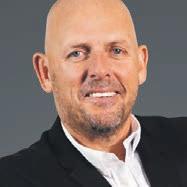
>
BY ALAN NEBEN
Alan Neben is a Mount Maunganui local and experienced New Zealand publisher. His columns provide a light-hearted perspective on social changes effecting New Zealanders.
know you can’t answer me directly, but this is not intended to be an entirely rhetorical question: Does anyone else have trouble deciphering important lines of dialogue in movies or TV shows nowadays?
Be honest, has anyone replayed the crucial scene 4-5 times and looked blankly at everyone else on the couch and said, “I haven’t got a clue what he just said … but I sense it was a really critical to the plot.”
I’ve been curious to know if it’s just me. Have you ever noticed? seemed an obvious column in which to explore this problem further. I decided to do a little research. It appears it may not be ‘just me’. I’m not sure if this revelation makes me feel better of not – there appear to be some logical reasons why at the end of episode five, when all has been revealed, I’m still not sure who killed the dead
guy – because, although all has apparently been revealed – and despite replaying the crucial frames when the ‘possible’ confession was delivered/ mumbled by the character I least expected to be a murderer – I still couldn’t make out what he said.
According to Vox journalist Edward Vega, this poor-quality dialogue sound phenomenon is real and there are three main reasons:
1. Dynamic range: in simple terms, if you are mixing the sound for a movie, you have to make sure the explosions are louder than the voices because, well, to be realistic, the sound of a bomb dropping in your neighbours backyard is in real life quite a bit louder than the volume of me talking to our dog – this is called dynamic sound range.
2. Naturalism in performance: Warner Brothers dialogue editor Austen
Olivia Kendrick explains that movie sound technology has evolved, and we now have wireless microphones which can be put on actors, so they no longer need stand in one place and project; they can now be more natural and go about their craft with a new-found technique – mumbling. Apparently re-recording dialogue (ADR) after the shoot is not so simple for actors either; trying to lip sync their original mumbling performance to be even remotely understandable is, in Hollywood parlance, non-viable (equals too expensive ‘cos we make our money in the theatre, not in your lounge).
3. Downmixing: movies are mixed and optimised for hi-tech theatres – eg Dolby Atmos – say for theatres with 128 channel sound systems. Then the producers ‘downmix’ for



The dynamics of the workforce are everchanging and as employers we find ourselves often needing to understand, engage with and manage a multitude of generations within our workforce.
Depending on the size of your company, it is possible you may have representation across four different generations within your workforce, and what works for one generation may simply not work for another. Each generation comes with its own intricacies and unique approach to work, and as employers, understanding these key drivers, motivations and strengths can help encourage a more engaged and harmonious work environment where each generation’s strengths are recognised and worked to.
You may well have found yourself with staff from the Silent Generation (although most will be well into retirement age), Baby Boomers, Generation-X, Millennials and now, Generation-Z and Generation Alpha.
But what are the general differences between them and how can business owners best utilise their strengths?
Here’s a snapshot of the generations that you are likely to encounter within your workforce and some of the traits that each are renowned for.
Firstly, we have “Baby Boomers”, known for their strong work ethic and dedication. They bring a wealth of knowledge and experience to the team, along with strong networking, mentoring, and problem-solving skills. Next is “Generation-X”, an independent and self-reliant generation who are adaptable and resourceful; again they have strong problem-solving skills, are comfortable with technology and value a good work-life balance.
The “Millennials/Generation-Y” need no introduction. This generation is tech-savvy and adaptable to new technologies. They are capable multi-taskers, collaborative and team oriented. Also of note is their entrepreneurial mindset. Gen-Y embrace diversity and inclusion.
“Generation-Z” are technologically fluent and are quick learners, usually incredibly comfortable with digital communication. They are creative and innovative thinkers and highly value work-life balance. Importantly – and as employers we are seeing this
television or phones … DANGER! … 128 channel sound down to 1-2 channels will invariably mean ‘not clear’ sound.
As a friend recently pointed out to me, “you can’t even see the small speakers in your TV [or my phone either, I guess] –no wonder you couldn’t hear what the dude with the shooter was saying as he ran away. Get a home theatre surround sound system man.”
Have we really advanced, or have we actually gone backwards? … I always knew what the killer said when I watched my PYE* black and white television back in the day – now I have to buy a home theatre to
find out who the killer is!
A recent survey of 1200 Americans showed half of them are using closed captioning most of the time when viewing movies and TV (this figure is even higher for GenZ’s at close to 70%), not just hearing-impaired people.
Although some are simply TikTok and Insta styles du jour – captions seem to be included by default on most posted video content I view daily – the biggest number of closed caption users use them because dialogue is just so hard to understand.
Consider this: I can always hear what the guy from Harvey Norman is yelling at me in




A recent survey of 1200 Americans showed half of them are using closed captioning most of the time when viewing movies and TV.”





their ads – even though I don’t want to know and it’s delivered with such lightning speed and incredible volume that I often feel a little bilious when I’m unexpectedly ambushed by him.
I hate saying this, but maybe the Harvey Norman guy should be dubbing the BBCs drama series – I know that means Tom Hardy will always have a loud Australian accent from now on, but at least we’d know he was innocent.
*Interesting local trivia: the PYE factory in Waihi was the first NZ company to commercially produce locally made NZ TVs in 1959.


> BY KELLIE HAMLETT
Talent ID are Recruitment Specialists and can support you through your recruitment process. Please feel free to talk to us about this by calling 07 349 1081 or emailing kellie@talentid.co.nz
come through strongly – they seek meaningful and purpose-driven work.
The latest generation, “Alpha”, are a little young to be in the workforce yet – but get ready as they are coming. This will be a technology driven generation. At a young age they have already seen massive changes in society –it will be interesting to see the traits that Alpha’s will bring to the workforce.
How do you manage the different generations to create a cohesive, stable, respectful and engaged workforce that caters to each generation’s needs?
Baby Boomers will often tell you that “culture” within the company is of little importance to them, but then Gen Z and Millennials will generally tell you that it is one of the most important things and can often determine whether they
will stay with the company or not.
As a Gen X’er, I find myself right in the middle of this generation range, not afraid of hard work, but still able to adapt to change and embrace new technology.
But for someone older, it can be intimidating coming face-to-face with so much change.
One thing this blending of generations has shown us is
that we have much to learn from each other. Each generation has unique experience, skills and perspectives to bring to the table, as long as we are open to learning.
While it can be challenging to manage a workforce with multiple generations, if we understand and appreciate the unique qualities and strengths of each, we can create a cohesive, stable and respectful workplace for everyone. Each brings with them valuable perspectives, experience, and skills.
By embracing these differences and creating a workforce that values diversity, businesses can leverage the collective strengths of a multi-generational workforce to create a strong, harmonious environment for their staff.



““We had a lot of
Daniel Kirk, Black & Orange Development Manager


”Offering sweeping water views of the harbour and Mt Maunganui, Vantage is a premium mixed-use development positioned on the fringe of Tauranga’s CBD, at 359 Cameron Rd.
A collaboration between Black & Orange Property, Edwards White Architects and BCD Group, it boasts four levels of luxurious apartment living, one level of commercial space – including a cafe – and two levels of basement car parking.
Black & Orange Development Manager Daniel Kirk said his company recruited Fosters to oversee construction due to prior experience.
“We like fact that Fosters are a local company, we can talk to senior management easily, as and when required, and we know they look after their subcontractors,” he said.
“We had a lot of confidence they’d deliver what we needed within the required timeframe, stick to the budget and deliver a high-quality product.”
In light of New Zealand’s current housing shortage and Tauranga’s recent population boom, Vantage was an opportunity to be part of the solution,
creating somewhere people could live, work and play “bang in the heart of the city”.
It came with “a heap of challenges” such as managing high-volume traffic, noise and dust impacts on surrounding homes and businesses, but Fosters impressed from the word go.
“Right at the front end, when we were negotiating the contract and trying to hit the budget we needed to, they were easy to work with,” Daniel said.
“And the way they managed the project on site was excellent. They were great, right down to dealing with neighbours and council, and always kept us informed of any potential issues.”
Despite two full Covid lockdowns, supply issues and cost increases, Vantage was delivered on budget.
“That’s no small feat,” Daniel said.
“On the whole, Fosters’ management of the project has been a whole lot better than what we could have hoped for.”
